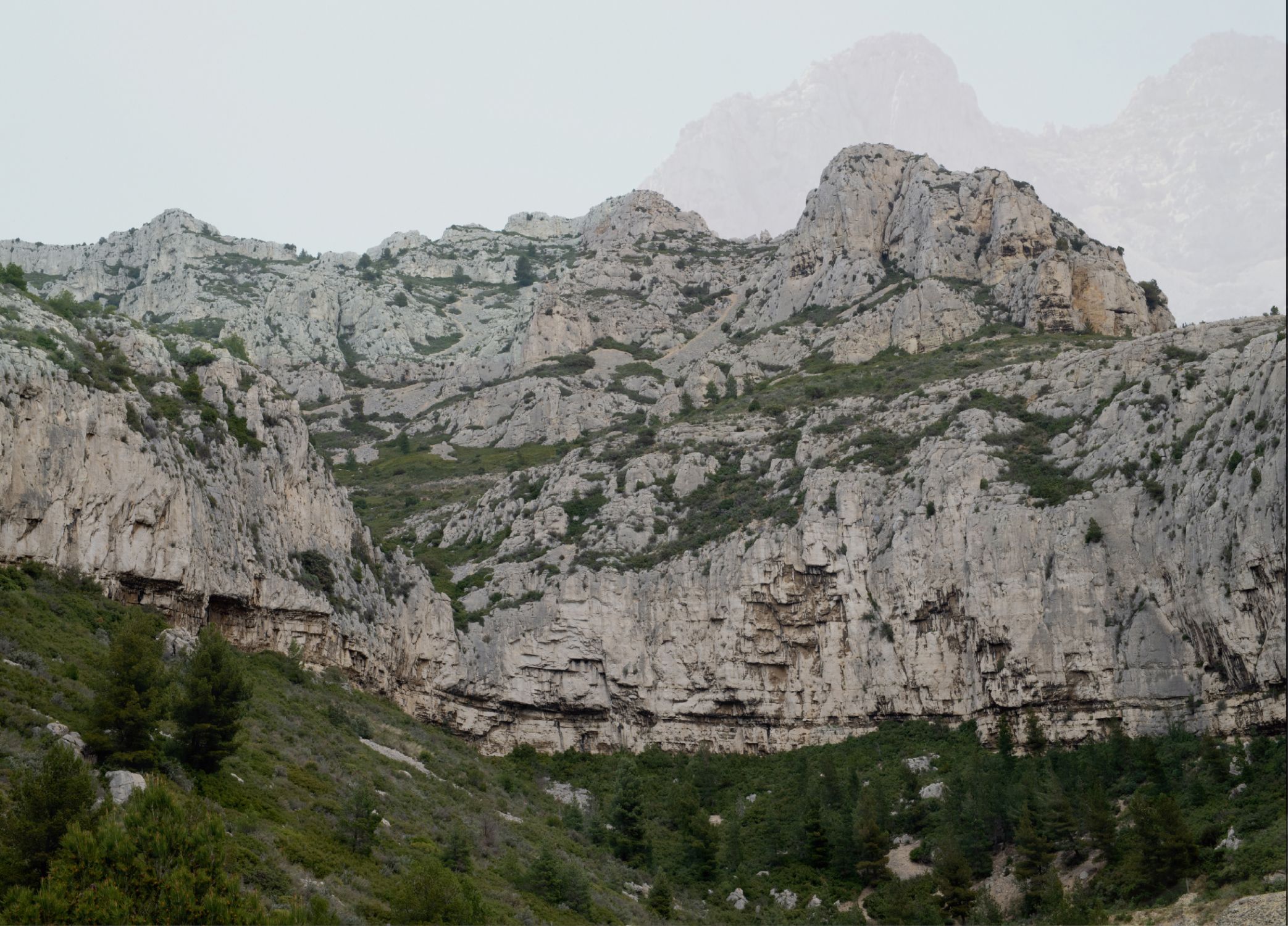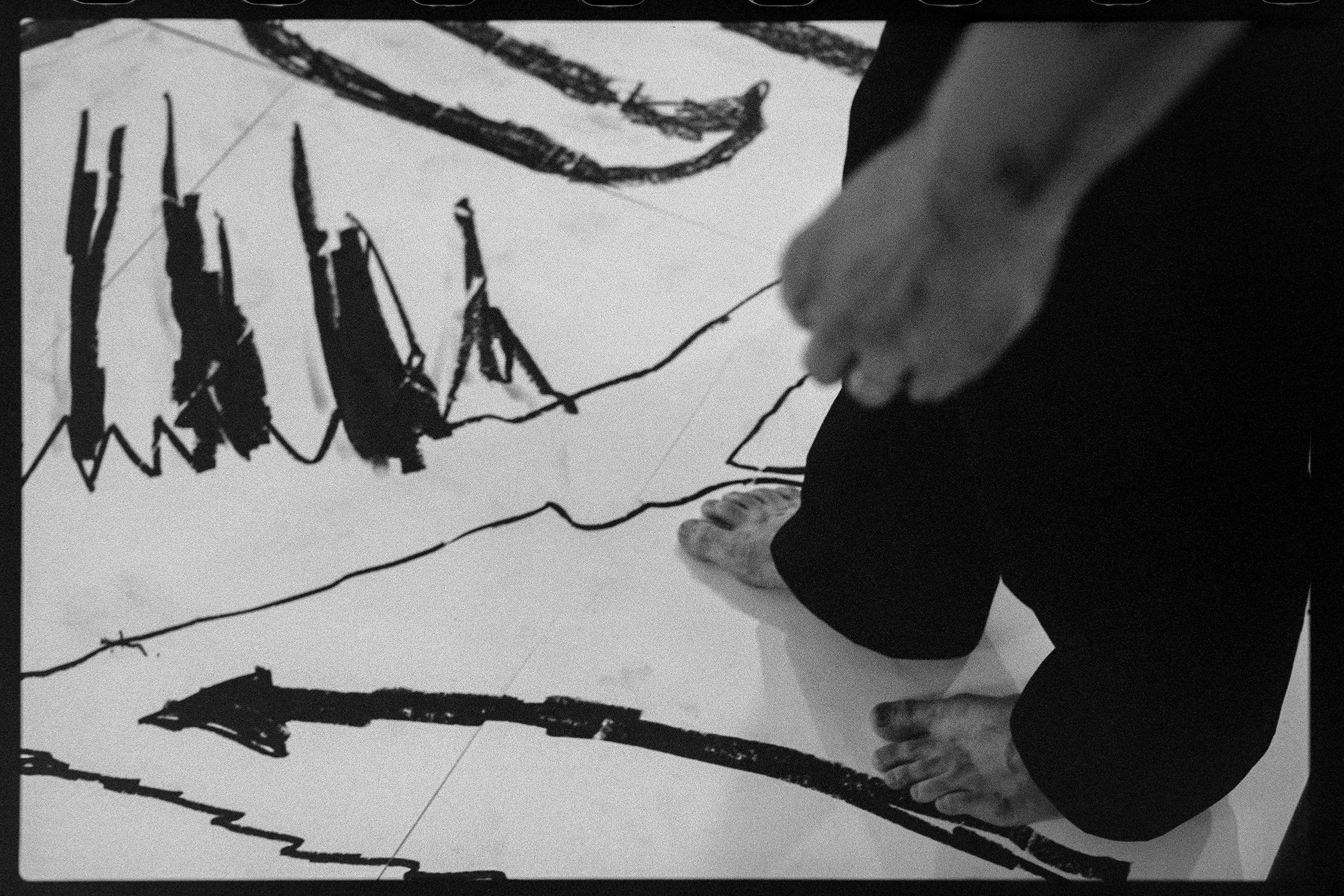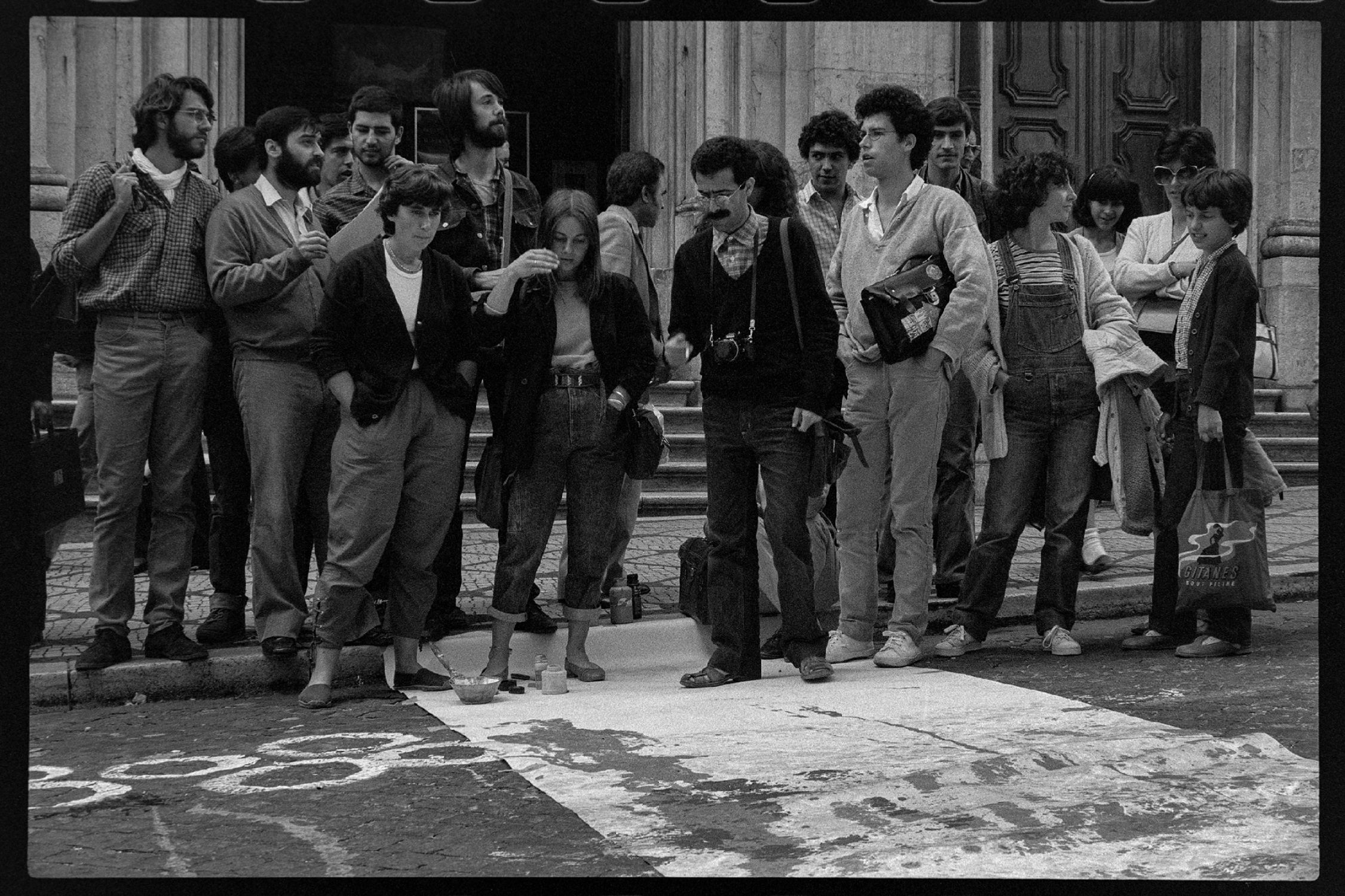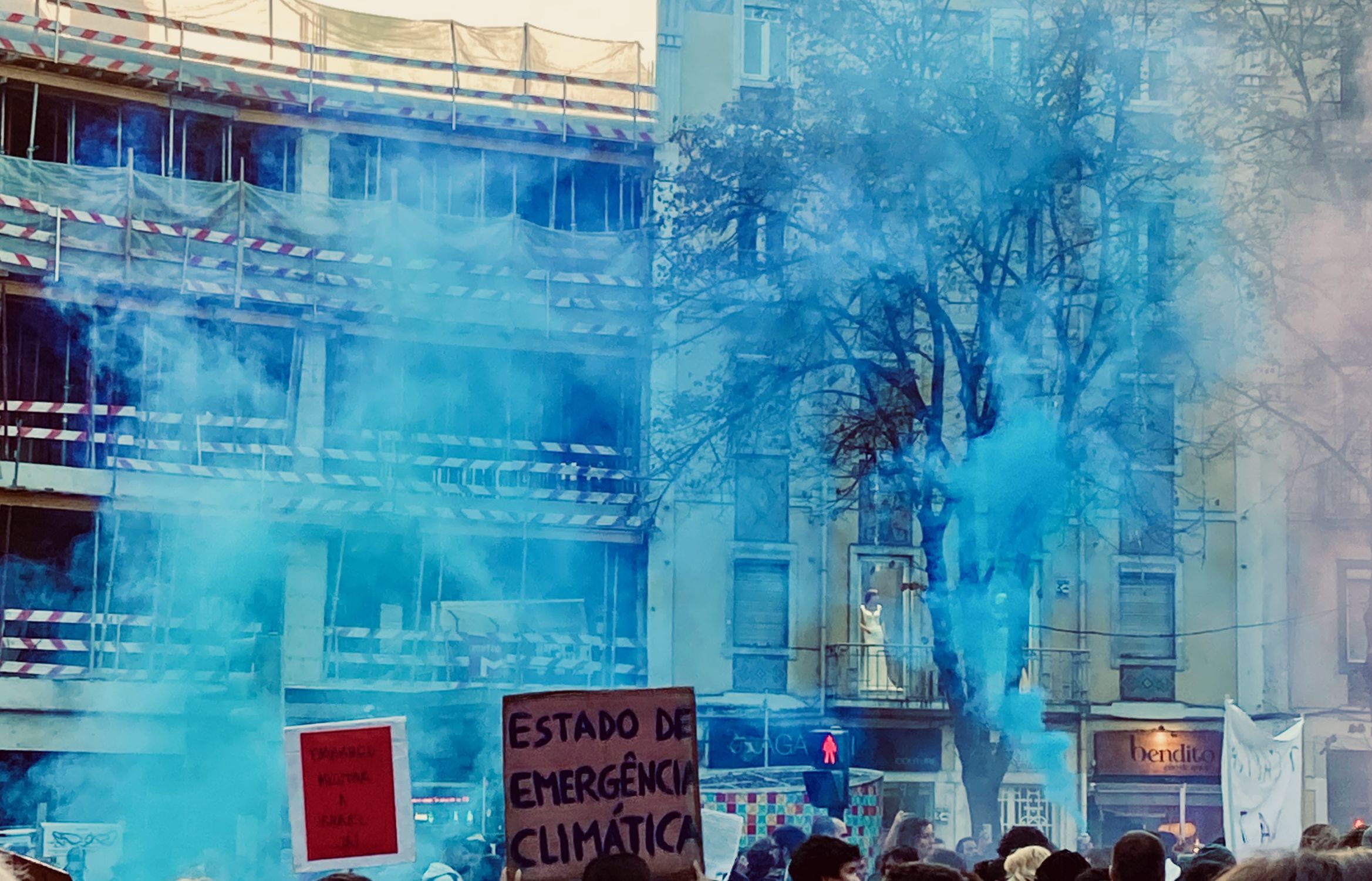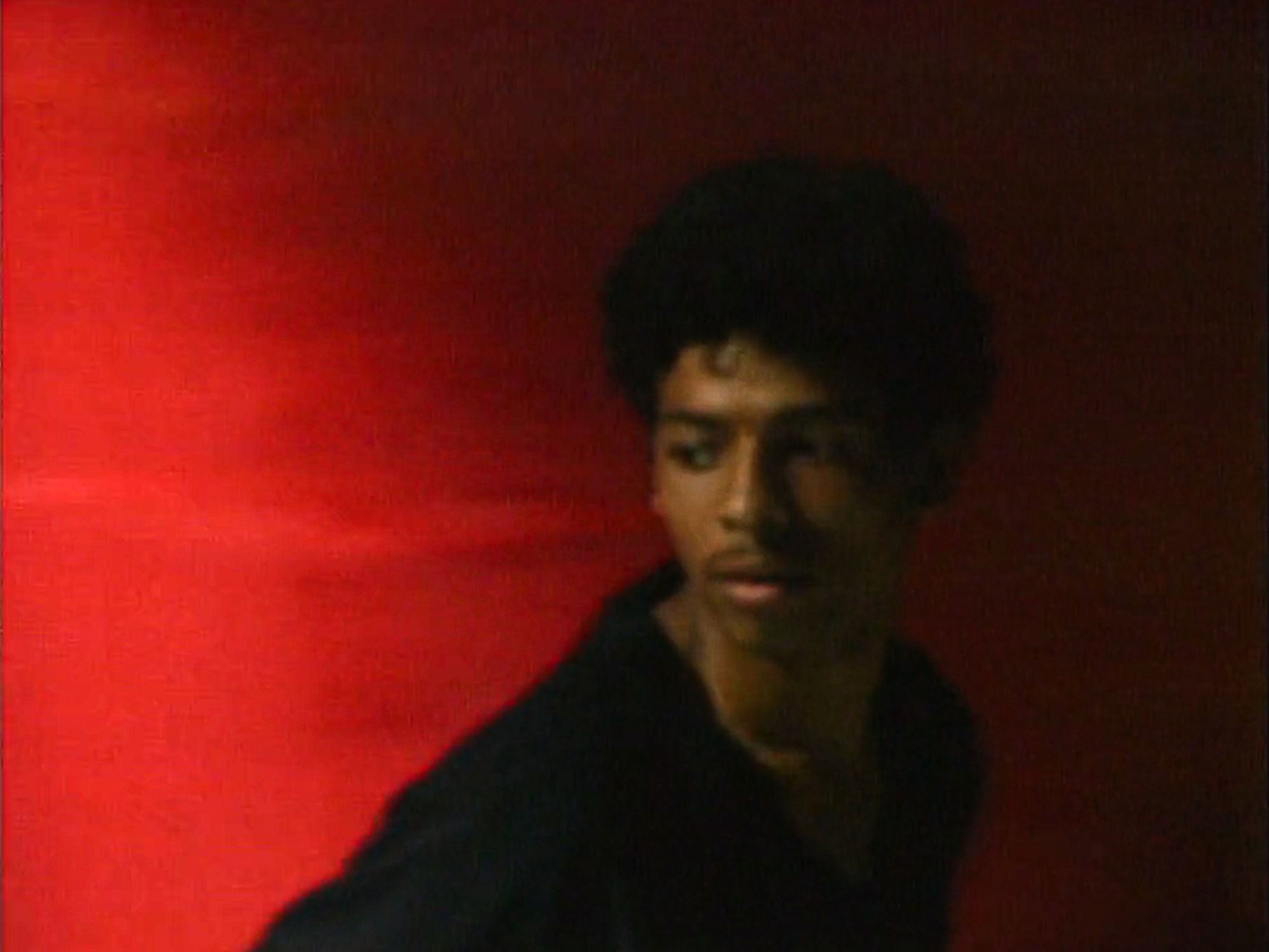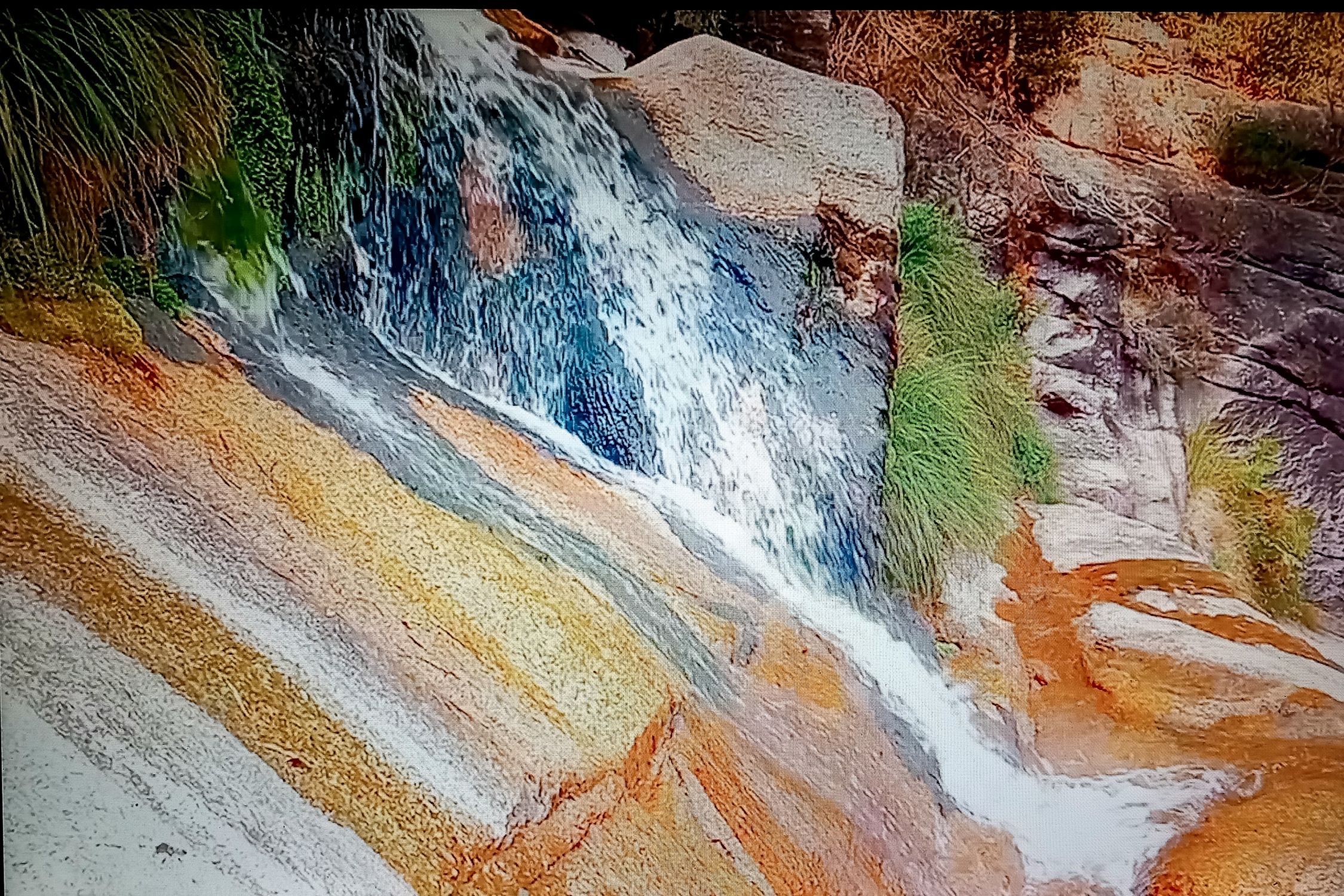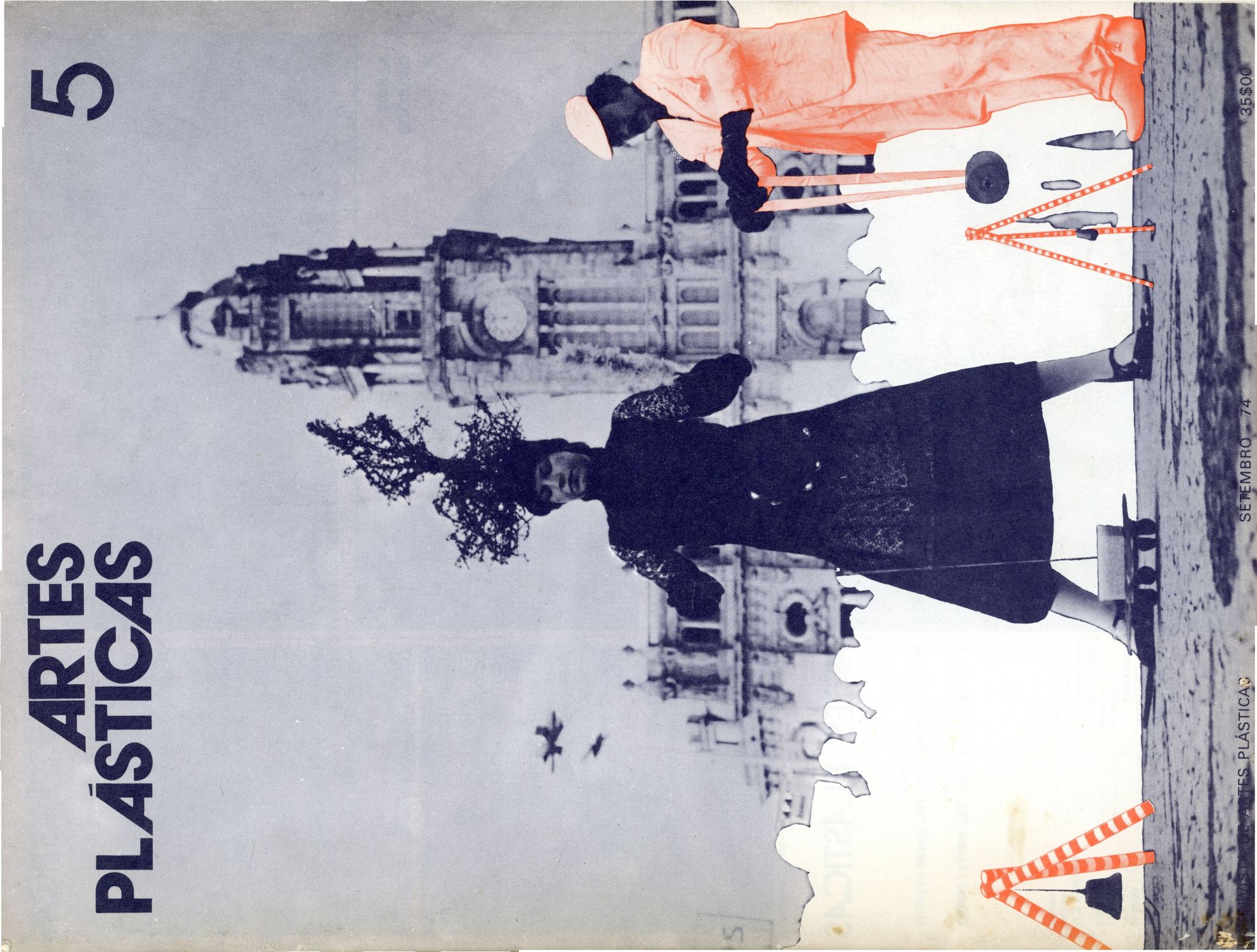As famílias não são álbuns fotográficos
Animação do Chiado, 1982
dancing words
águas tortas
ONE MORE TIME – BOWFINGER REVISITED
r
e
v
e
s
1. Introduction
There is a need to re-imagine immigration and its implications in postcolonial socio-cultural spaces of contemporary European societies. This implies the challenging task of de-attaching the word 'immigration' from its entrenched and, in recent decades, constantly reinforced connotation of a 'threat', cultural, social, and political; of disputing the narrative that constructs the figure of an immigrant within a generalised and stereotypically entrenched image of the precarious, the abnormal, 'the other'. The task is also perplexing as its undertaking is inconvenient for the existing power relations in the binary opposition of 'the West' vs. 'the Rest' (Rattansi, 2011), historically developed (Said, 1978/1995), and discursively supported through power-knowledge dynamics (Foucault, 1980). As Margaretha A van Es underlines in her article on Dutch Muslim women and their (everyday) resistance against stigmatisation, «(s)tereotypes are constructed within unequal power relations, and they are both cause and effect of marginalization: a dominant group speaks of and for a marginalized group, thereby reinforcing the marginalized position of the latter» (2017, p. 3). In these conditions, the symbolic cultural border between 'the us', the 'natives', the European, and 'the others', the 'immigrants', the excluded from the European identity narrative, is (re-)built and maintained, reducing the stereotyped to «a fixed definition that deviates from the norm» (Ibid.) and leaving little recognition for individuality.
Considering the mediating role of cinema as it actively intervenes in society, contributing to preserve, alter, or subvert the existing power relations (Shiel, 2001), it is interesting to examine how cinematic (self-)representations of immigration and diaspora respond to the politics of 'othering'. Such representations, examples of which are German-Turkish, British-Indian or French-Maghrebi cinemas originating in the European 'old hosts', have become powerful tools to communicate and 'normalise' the presence of immigrant(descendant)s, to portray their lives as bicultural, or to use Welsch's terminology (1999) transcultural, subjects, and to explore the implications of intercultural encounters and everyday exchange within their host societies. For instance, how hybrid identities are being constructed and negotiated in a (socio-political) context where essentialist 'monocultural' perceptions of identities are dominant[1].
Referring to Spain as a new host, where immigrant(-descent) filmmaking is a relatively recent phenomenon, this paper aims to explore the potential of such filmmaking to challenge the 'othering' and contribute to the reimagining of immigrant (descent) subjects. In order to conduct such analysis, the suggestion is to refer to the theory of transculturality (Welsch, 1999; Flüchter & Schöttli, 2014), which provides important conceptual solutions for re-approaching cultures as complex and flexible. The paradigm suggests the conceptual tools to analyse the negotiation of (immigrant) hybrid/multiple cultural identities, practices and lifestyles as a dynamic and context-dependent process, which involves the influence of a specific socio-cultural environment and the role of the individual agency. As essentialist perspectives of culture inform and reinforce the constructs of 'othering' by addressing cultural identities as uniform and fixed, and a transcultural paradigm challenges such essentialist order, the exploration of the films' response to 'othering' is to be guided by the transcultural perspective. Another suggestion is to pay specific attention to documentary practices, as they can serve not only as a social platform of reflection and inquiry but also as a research instrument for revealing the factorial links between the questions of immigration, integration, identities re-negotiation and the social justice involved.
The discussion of the selected documentary The Other Side... An Approach to Lavapiés/El otro lado... Un acercamiento a Lavapiés (2002) by a Egyptian-born film director Básel Ramsis is further conducted. The method of analysis entails the combination of the formal (narration, editing, cinematography) and discursive examination of the film with a transcultural analysis. The objective is to illustrate how the film functions as a platform of negotiation between the essentialist and transcultural perspectives, and to see how it contributes to questioning and redrawing the national cultural imagery from 'monocultural', or essentialist, to transcultural. How do the European framing spaces, specifically physical and symbolic spaces of social interaction, function as transcultural - complex and hybrid - as spaces for transcultural interaction, exchange, and reinvention of identities - for the re-negotiation of dual/multiple cultural positions of immigrant subjects?
Transcultural analysis thus serves as a means of examining and interpreting the discursive social value of the film as a platform for complicating, renegotiating and reimagining the construct of an immigrant 'othered' self.
The undertaken analysis illustrates the film's engagement with the issue of 'othering' through functioning as a strategy of resistance against stigmatisation and segregation. The strategy involves the unbiased approach of the filmmaker, as he speaks with an egalitarian attitude to the protagonists, and the facilitation of a platform where the protagonists act as their own transcultural agents. Through the exploration of a multicultural Madrid neighbourhood the director takes a stance against the construction of a generalised image of an immigrant 'other' in Europe, while we can analyse through film visual and discursive stories the impact of stigmatisation on immigrants' self-perceptions and their intercultural relationships. Discursive 'othering' and stereotypes figurate as the most essential contextual factors that play a determining and interfering role in transcultural dynamics, namely influencing transcultural interaction and exchange and the negotiation and expression of the immigrants' cultural identities and belonging. By obstructing acceptance and inclusion, 'the othering' further impedes integration processes, which, as the communicated stories advise, are to be reconsidered beyond the assimilationist frameworks.
2. Transculturality's notions to address the film's transcultural negotiations
The director of El otro lado...Un acercamiento a Lavapiés[2] Básel Ramsis is a Egyptian-born screenwriter and filmmaker who came to Madrid in 1998. According to the audiovisual school where he teaches, Ramsis has been working transnationally and directing films in Egypt, Spain, Lebanon and Palestine (EICTV), and El otro lado... is his first feature. The film aims to provide the insights into the lives of major immigrant groups of a Madrid neighbourhood of Lavapiés, which include Chinese, Latin-Americans, Bangladeshi, Arabs and sub-Saharan Africans; and can be considered an important research on the contemporary multicultural becoming of Spain. But more than that, as the theme of immigration-integration has become a popular topic in cinematic and media representation in Europe, the film's treatment of this question is of interest. The documentary was made more than 15 years ago, but its visual and discursive approach to researching the relationship between the lives of immigrant subjects and their mediatic negative imaging and the 'othering' appears to be relevant in the Europe of today.
To examine the implications of such research the transcultural analysis will be guided by the referential notions of the theory of transculturality, namely, the context-transculturality interdependency (Flüchter & Schöttli, 2014), 'Third Spaces' (Bhabha, 1994), and transculturality as a process and a result.
Referring to the context implies analysing the film's dialogue with its larger socio-political, socio-cultural and discursive background, a wider political space. Following Flüchter & Schöttli's conceptualisation that transcultural dynamics «vary according to its (...) contextual specificity» (2014, p. 2), the examination of the socio-political environment, for example, allows discerning the conditions and possibilities for transcultural encounters to happen and transcultural relationships and exchange to develop. El otro lado...'s dialogue with its context is to be explored in reference to the issue of discursive 'othering' of immigrants in Europe, and in Spain in particular, and how this problematic is played into the macro discursive context of the narrative.
The transcultural analysis of the filmic images will further address how the contextual specificity is projected at the level of the spaces of social interaction in the neighbourhood, the spaces that are shared between the immigrant subjects and the 'natives'/the autochtonous population, and that contain the 'contact zones'[3] (Pratt, 1991), in which transcultural encounters and further interactions occur. The spaces of social interaction function as micro projections of the macro political context (e.g. physical urban spaces or symbolic spaces of reference such as memberships, affiliations, family, circles of friends, etc.), and will be generally referred to as framing spaces. The analysis focus is thus on the transcultural functioning of Lavapiés: as a 'framing space' for transcultural interactions and exchange, and a transcultural space for the renegotiation of identities.
What has to be considered here is the role of the macro context in configuring and even defining the functioning of those spaces as transcultural. For example, the stereotypical imagery of immigrants in media and political discourses, as part of the macro discursive context, can impede the functioning of framing spaces as transcultural by configuring them as restrictive, 'closed', and characterised by a lack of transcultural interaction. Furthermore, the configuration of framing spaces as transcultural spaces for the renegotiation of identities, can be explained by a transcultural element of a 'Third Space' (Bhabha, 1994). A 'Third Space' stands for an abstract territory where the identities renegotiation takes place, enabling «new cultural positions to emerge» (Rutherford, 1990, p. 211); thus, its creation within or across framing spaces signifies that a transcultural exchange is facilitated and dual/multiple cultural positions have entered in a dialogue of renegotiation. The question to ask is how Lavapiés' framing spaces become 'Third Spaces'.
In reference to the third element of transcultural analysis, transculturality can be interpreted as both a process and a result of negotiating multiple cultural positions. Such negotiation follows a cultural contact, for example an encounter between the 'host' and 'home' cultures, and involves juxtaposition, contrasting or combination of different cultural elements (lifestyles, practices, modes of communication, etc.) and reinvention of identities. Cultural hybridity can be referred to as an example and a result of transculturality, but transculturality also involves transforming identities and transforming subjectivities as ongoing processes of identities negotiation and transformation that preceed and foresee the creation of a hybrid cultural identity. As cultural hybridity constitutes a process which produces a new product of identity that goes beyond the «originary culture» and a «received tradition» (Bhabha, 1994, p. 2), a hybrid cultural identity thus encompasses renegotiated cultural positions, in which different cultural elements from originary and 'received' traditions are combined. The question to ask here is how the immigrant protagonists' identities are expressed? How do they position themselves through their self-reflections, and what do they refer to in order to define their belonging? The exploration of this question allows examining how the immigrant protagonists individually respond to 'othering' and stigmatisation.
In terms of the formal structure of the documentary, the director chooses to focus on testimonies and dialogues prioritising them as the main instrument for composing the story of the film, as a tool of intercultural interaction and inquiry with the aim of collecting as many diverse perspectives as possible. The testimonies play a significant role in meaning production, while they are also complemented with observational filmmaking (of the contextual spaces in which the meanings are negotiated). The analysis will further demonstrate how the application of the different discursive strategies and formal cinematic techniques is used to produce the meanings that counter the 'othering' and destabilise Madrid's essentialist/'monocultural' socio-cultural imagery.
3. El otro lado...Un acercamiento a Lavapiés (2002): transcultural analysis
3.1. The film's dialogue with its context of reference
The construction of European 'cultural others' has been taking place within multiple discursive frameworks, both on national and supranational levels. Contemporary exclusion of the immigrant subjects of non-European descent from the framework of the 'common European identity' as well as from the 'national imaginaries' is based on the constant reinforcement of intrinsic cultural differences both in historical and contemporary contexts. Within the historical perspective, these are Euro-centrism and the ‘clash of civilizations’[4] rhetoric which have become a basis, directly or indirectly, for many contemporary nation-centric discourses on immigration and integration of immigrant(descent) subjects. In many Western European societies where right-wing parties are gaining popularity, discursive stigmatisation of the 'non-Western cultures' is on the rise. The discourses delve into abstract statements on the incompatibility of cultures, a danger to Western civilisation from the non-West and the necessity to defend and preserve Western democratic values against the 'arrivals' of the Southern and Eastern populations. Fears around a 'cultural danger' are complemented by preoccupations in regards to high rates of delinquency as a 'delinquent' is frequently identified with an 'immigrant', in political and media discourses.
At the beginning of his documentary, Básel Ramsis makes an introductory reference to the theoretical narrative of the ‘clash of civilizations’ by denouncing Huntington's theory. A statement is thus made against the Western-centric cultural binaries construction and the spectator is given a hint of the deconstructive exploration of the film. El otro lado... further puts an emphasis on the contemporary discursive 'othering' and marginalisation of immigrants as an important contextual framing to consider. With the testimonies of immigrant subjects and those of the 'natives', the film demonstrates the presence of a generalised, predominantly negative image of an immigrant subject, which forms part of the Spaniards' consciousness. As the stigmatising labelling and essentialist perspectives persist, such situation not only impedes and interferes into transcultural interaction but also into the further exchange and the negotiation of identities, belonging and self-perceptions.
In this way, the film is connected to the postcolonial and transcultural research inquiry of the entrenched stigmatisation of immigrants in contemporary European societies. As analysed within the postcolonial research, the divide between 'the us' and 'the others' exists because the conceptualisation of cultural difference in the perspective of 'the West' has appropriated the model of exclusionary cultural bifurcation with a ‘positive’ vs. ‘negative’, or a ‘superior’ vs. ‘subaltern’ divide. And this model takes its roots in the construction of Europe in the context of its colonial power negotiations between the colonizer and the colonized. In her article Postcolonial and decolonial dialogues, sociologist Gurminder K. Bhambra argues that this divisive system of European self-negotiation at the expense of the differentiation from the others without conceiving the understanding and exploring the cultures of these ‘others’ has organised «the world into homogenous, separable categories arranged around hierarchical dichotomies and categorical logics» (2014, p. 118). The narratives of national identity construction in contemporary Europe incorporate this logics of differentiation, specifically a Western/Eastern divide. As Schriewer and Cayuela underline, the process of a national identity construction, in which nation is equalised with culture, has given a way to the political separation of what belongs to the 'national identity' of 'the us' and what is marked and identified with 'the other' (2016, pp. 9-10), and identities of 'the others'. For instance, European Christian identity vs. non-European Muslim identity, Western progressive values vs. Oriental traditional values. The effect of this binary construction is that it enforces labelling, which, in turn, interferes into transcultural interactions and plays a major role in the lack of such interactions. Robins suggests that the challenges for the transcultural interactions as well as for the transcultural research, which implies the analysis of cultural encounters, reside in «the (nation-centric) logic of cultural categorization» (2014, p. 28), a logic which can be found in the majority of media discourses on immigration. Nation-centric logic views migrant populations as subordinated subjects that have to conform, that is to say to adhere to the imagined cultural order of the national majority, to be integrated (Ibid.), while integration is equated to assimilation.
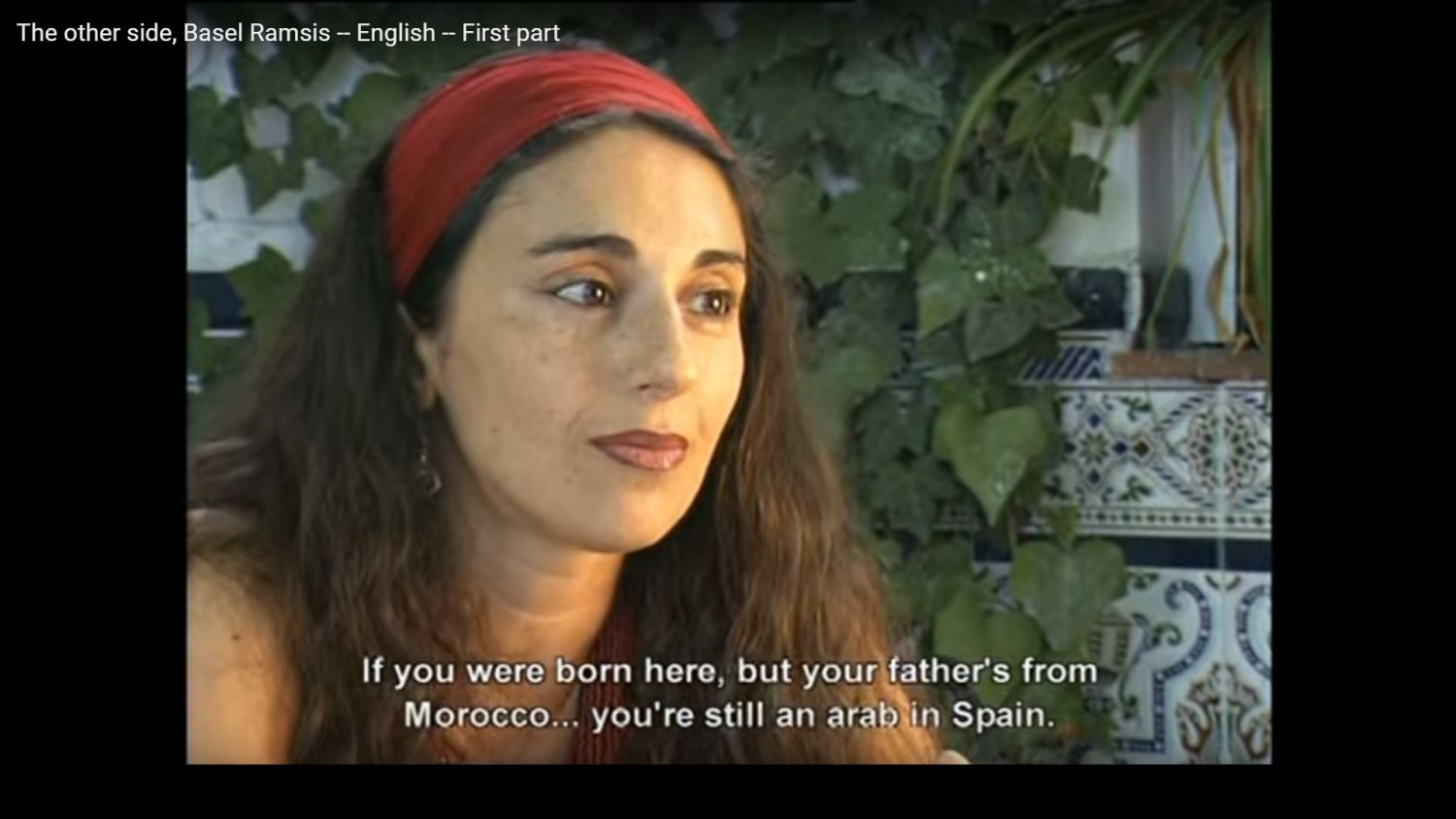
Ramsis' film can be positioned in this framework of postcolonial and transcultural research because it intends to show that there is an alternative perspective within which to address the life of an immigrant - without pre-conditioning their personal trajectories and choices on the ground of ethnic origin or cultural group of reference. The lives of the immigrant community members are addressed through dialogue and observation, and the combined stories and perspectives create a multifaceted picture of the life in Lavapiés.
The filming location is one of the most symbolic places in the city that illustrates the impact of the recent transnational migration on the cultural fabrics of Spain's capital. The composed shooting material of the documentary assists in contributing to a historical picture of the transformation-in-process of the city's urban, cultural and social landscape. We can see how, as a rapid increase in cultural diversity has taken place, the physical and symbolic spaces intertwine in order to negotiate their old and new functions. Within the recent two decades, Lavapiés has become the neighbourhood with the highest number of foreign born population in Madrid. As Castillo-Villanueva points out, multiple factors have contributed to this configuration. Starting from the late 1990s-beginning of the 2000s (which was also the period of sustained economic growth in Spain), the place has become attractive for immigrants because of its low-budget rent prices of housing and its close proximity to the centre[5] (2014, pp. 85-88). This area has been especially suitable, although not exclusively, for the workers in the construction sector who came to Spain in response to the 'boom' in the industry and its necessity for a manual, predominantly cheap labour. Many things have started to change rapidly since then, the major one related to the attraction of the national and international business capital to the area and the initiation of the processes of gentrification. The rent housing prices have started to increase and different business offices have started to appear. The film is set against the background of this socio-cultural transformation, which contributes to understanding the circumstantial conditions of immigrant (descent) subjects and the impact of ongoing changes on their life trajectories. The changing socio-economic context is reflected upon in the protagonists' testimonies, while the reflections interweave with how the immigrant subjects consider their positions in their host society as uncertain, both in terms of their marginal social status and in terms of acceptance/non-acceptance.
3.2. Lavapiés as a transcultural setting: from framing spaces to 'Third Spaces'
One of the first introductory scenes is an edited sequence of several minutes that shows the streets of Lavapiés and people of diverse ethnic backgrounds in the public spaces. A woman in hijab, a collective of men of multiple distinct origins, a women in a traditional African outfit are among several examples. The camera movement selects to focus with close-ups only on those people who look distinguishably 'non-native', and later the editing work results in the intermixes of these images with the focus on 'native' Spaniards, showing Lavapiés framing spaces of social interaction as shared. The cultural meanings here are created visually. The camera works as an observation eye, while at the same time it directs the eye of the spectator towards the elements that point to the cultural diversity in the area and its rich character. Lavapiés appears as a lively place, where the spaces of leisure overlap with the spaces of work. We see construction workers, bartenders, shop-assistants, street performers working and interacting. The editing work of this scene is not only an important element in communicating the human diversity of Lavapiés, but also in emphasising small relevant details that introduce the results of transnational immigration, e.g. «Carniceria Islamica Tanger» reads the sign of one of the shops. It overall renders a piece of a multicultural reality of the neighbourhood, emphasising the presence of an intercultural interaction and inviting the viewer to ask the questions of who the participants of this interaction are.
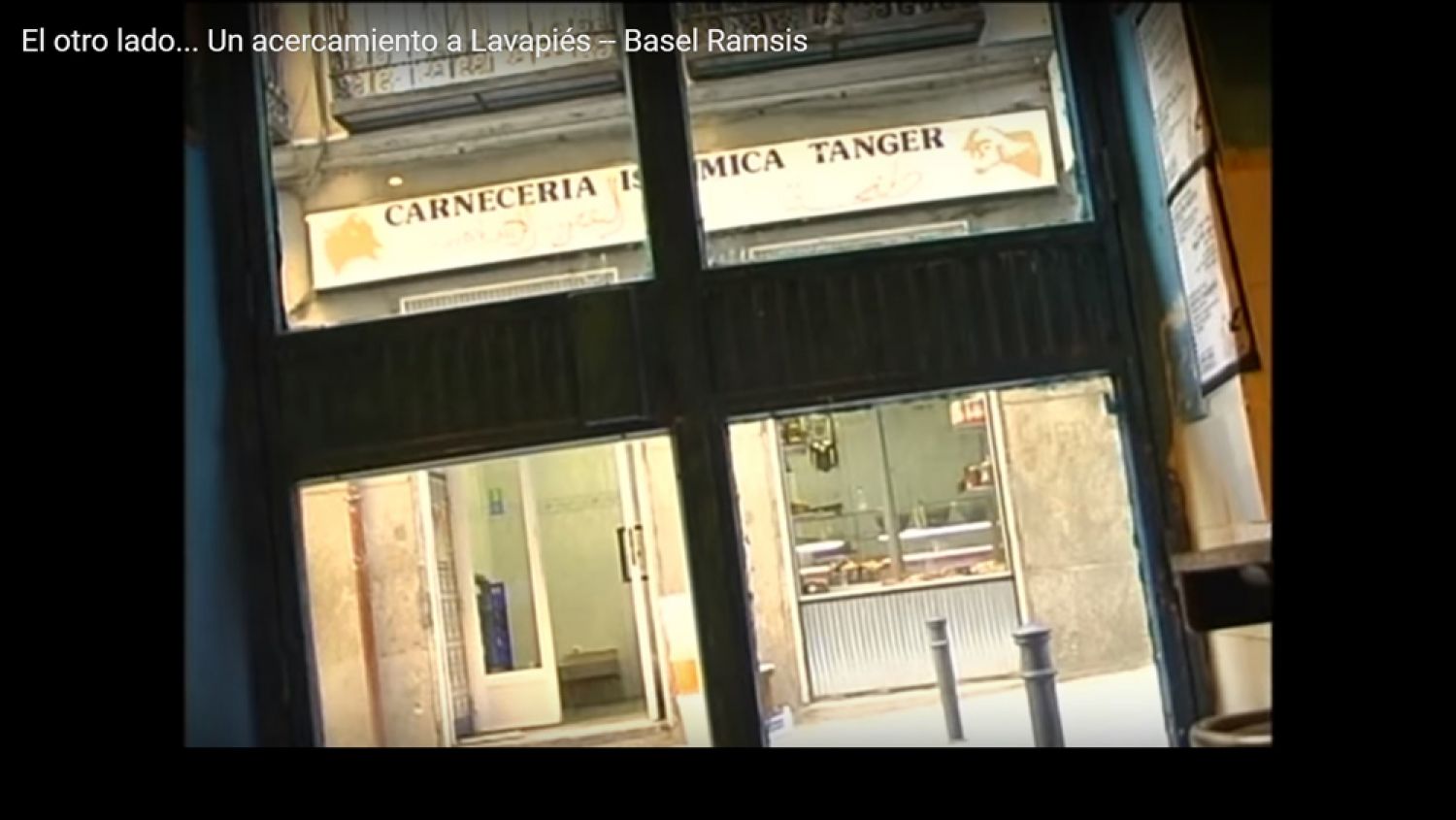
Despite being fragmentary and selective, these introductory scenes provide a spectator with a deriving picture of the multicultural dynamics in the neighbourhood. They serve as a preparatory basis for the further focusing on individual and group dialogues and testimonies which intend to build a more complete multicultural imagery of Lavapiés. Edited as shifting between one to another, the testimonies construct a heterogeneous cultural picture, drawing from the variety of ideas, opinions and perceptions. The aim of the analysis here is thus to examine the conversations (testimonies), in combination with observation scenes and formal choices of the director, for how they complexly define, interpret and position Lavapiés and framing spaces of social interaction within it. The question to answer is in what conditions Lavapiés is able to articulate its transcultural function, both as a framing space for intercultural interaction and exchange as well as a 'Third Space', a space for a renegotiation of cultural positions and reinvention of cultural identities. The film engages into this question by depicting quite differing, even conflictive, dynamics that influence Lavapiés' configuration as a transcultural space.
On the one hand, Lavapiés is functioning as a transcultural space for interaction as expressed through networking and intercultural exchange. As a networking place for transnationals, the neighbourhood operates as the platform of establishing contacts that are based on guidance, information exchange and advice for newcomers. Many informants talk about it as a place with special atmosphere of togetherness and close social ties. Lavapiés is denominated as a refuge and a comfort zone, where people of different origins find a common platform for interaction and elaboration of cooperative spirit. «Here people take refuge (...) In other places the same people would not find mutual points of understanding», voices one of the protagonists, then adding «because it is a place where people get together»[6] (Ramsis, 2002). This provides Lavapiés with a determining role in facilitating the formation of interethnic solidarity and intercultural interaction. Filmed multicultural gatherings of musicians in the streets of Lavapiés, for instance, serve as vivid examples of such interaction, which provokes an intercultural exchange. As the events of intercultural exchange, they contribute to (re)negotiating the socio-cultural imagery of Madrid by telling the stories through the musical instruments, the lyrics, the performances and the performers. As the musicians gather at a square to play an improvised piece together, the film thus demonstrates how enriching the cultural diversity is, as the interactions result in hybrid collaborations of combining the melodies and singing songs in various languages. The framing urban spaces of Lavapiés are thus configured as a transcultural space of interaction which provokes a transcultural exchange. Because of its existing vibrant cultural diversity and the openness of its residents for interaction, Lavapiés is open for a transcultural encounter, for the activation of 'contact zones', and anticipates the hybrid possibilities of a transcultural exchange.
Nevertheless, an opposing to transcultural, essentialist dynamics maintain their power and presence. Lavapiés also functions as a restrictive space in which the interaction is impeded. As a recurring element in the stories told and opinions expressed, the segregation and marginalisation can be understood as the most influential factor that interferes in the intercultural interaction and in the possibilities to configure Lavapiés as a transcultural space for renegotiation of cultural identities and the articulation of hybridities, meaning the creation of 'Third Spaces'. The immigrants feel and know that they are looked down upon, that the attitude to them is projected within double standards, while at the same time they are blamed for the 'failures to integrate' and self-enclosement in ethnically-divided ghettos. «The policy directed at the marginalisation of the immigrant (...) has begun many years ago. It considers the immigrant as a cheap guest labour»[7] (Ramsis, 2002), – voices one of the protagonists. As one of the Spaniards expresses his opinion that the local authority of the neighbourhood hasn't done anything to accommodate and integrate the immigrants, another one manifests strong prejudices about crime or disorder based on ethnic origin: «I'm not a racist, but whoever arrived here is more bad than good»[8] (Ibid.).
Media and political discourses on immigration and immigrants are understood as the sources, usually working on a subconscious level, that have facilitated the construction of this kind of prejudices and essentialist perceptions. One protagonist refers to several examples of labelling, such as a Dominican or Cuban woman marked as a 'prostitute', a Colombian associated to a 'drug trafficker', a Chilean or a Peruvian as a 'pickpocketer'. While circulated in mass media, these constructs influence how immigrants are perceived in their host society; and the preoccupations of immigrant subjects about them and their desire to stand against and deconstruct them signifies that immigrant stigmatisation as a process in itself is entrenched and continuing.
The projection of this narrow-minded stigmatised perception can be seen in open racist attitudes and insults towards the immigrants. But also a reference is made to anti-immigrant sentiment on a political level, shown through the actions of the city's institutional body. As the neighbourhood alternative theatre group Friks, based in the local Sala Triángulo, created different critical works in relation to immigration, the Regional Government of Madrid started to cut the pre-planned funding because, as a member of the group said, «they do not like the cultural policy that we develop in our art space»[9] (Ramsis, 2002).
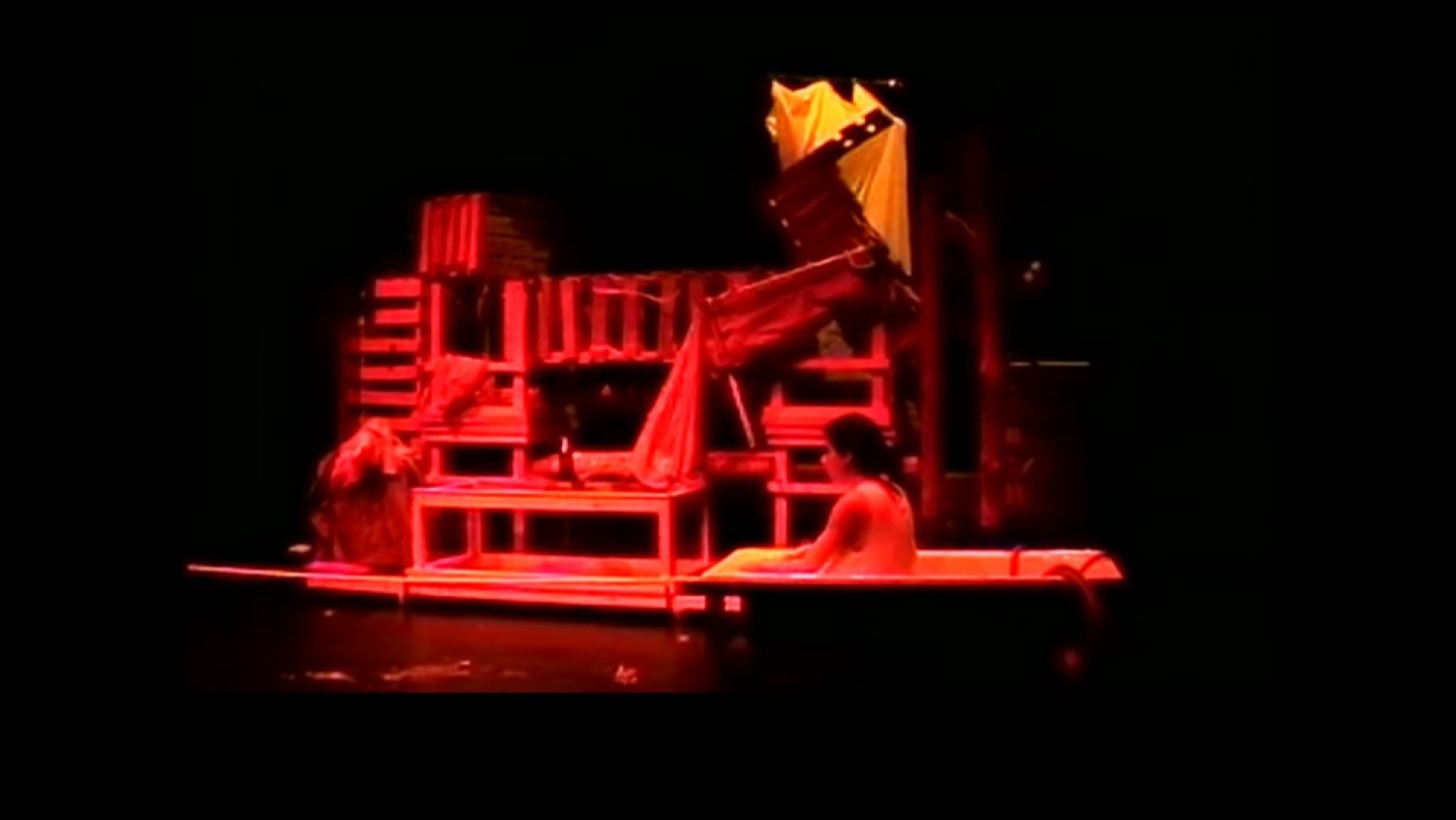
These aspects of social attitude are individual and collective projections of a bigger socio-political environment and discursive 'othering' of immigrant(descent) subjects. The framing spaces are configured, in these conditions, as close-minded spaces fearful of a transcultural encounter, and of cultural mixing, exchange, and transformation. In these conditions, the 'othering' continues and the creation of 'Third Spaces' becomes uncertain. The functioning of Lavapiés as a restricted transcultural space is not only enacted but also maintained through the power of essentialist perspectives, and these perspectives interfere in the process of immigrants' social integration in Spanish society. Here, self-protection appears as a reaction to prejudices and racism: «If there is racism and xenophobia you are forced to close up and protect yourself»[10] – is voiced in the film by a female protagonist.
El otro lado... intends to break some of the entrenched imagery nurtured by media and discursive essentialist constructs in people's perceptions. With the scenes of intercultural interaction, as well as instances of pro-immigrant attitudes as communicated through observational images and testimonies, the film illustrates that more open transcultural perspectives do exist[11], that facilitate transcultural exchange and anticipate identities reinvention. Yet, these perspectives are obliged to share their functioning spaces with essentialist (prejudicial) perceptions, whose power is overwhelming. Framing urban (public) spaces of Lavapiés thus become 'Third Spaces' only fragmentarily as they function as the framing spaces for transcultural negotiation both within the dimensions of openness and restrictiveness. The intercultural interactions take place on a daily basis but are conditioned by personal proactivity and open-to-difference attitude of the participants of this interaction; and the renegotiation of identities requires conditions of acceptance and transcultural perspectives that would contribute to a wider construction of (the feeling of) belonging.
3.3. Self-perception and response to 'othering'
Despite their long-term residence in Spain and mastering of the Spanish language[12], there is little social recognition of immigrant residents of Lavapiés as a rightful part of Spanish society, or even of the area of residence. As the testimonies of several Spaniards reflect, there is a lack of awareness and of interest in the immigrant paths and their cultures, even if they live in the same neighbourhood and share the same public spaces. This lack of awareness can be further related to the lack of interaction between immigrants and 'natives'. Whereas people of different origins participate in organised and casual gatherings in the streets and cafes of Lavapiés, there is a scarce participation of 'native' Spaniards in such gatherings. At the same time the 'non-recognition' of the immigrants' belonging is projected through the construction of an imposed identity of an outsider, a marginal, a delinquent, and 'the other' enclosed in his/her ethnically-delimitated ghetto, both at the level of media discourses and at the level of individual perception. Such construction resonates with the expressions of symbolic injustice of what Nancy Fraser called «authoritative representational, communicative, and interpretative practices of one's culture […] and disrespect (being routinely maligned or disparaged in stereotypic public cultural representations and/or in everyday life interactions)» (1997, p. 14). The question to ask here is, while the 'non-recognition' of belonging persists, how do the immigrant protagonists respond to this 'othering' through their self-reflections?
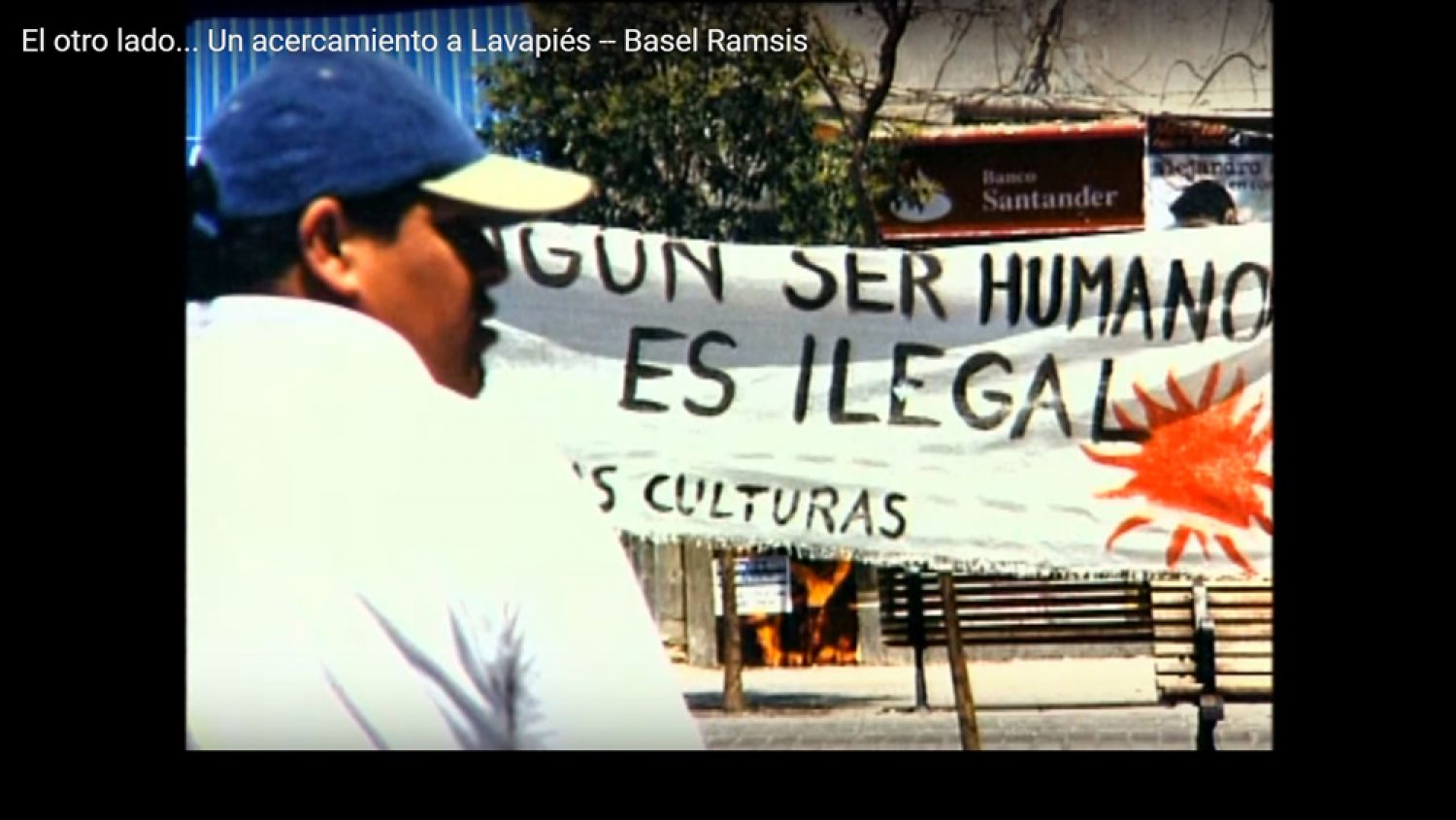
If we think back to Las Cartas de Alou (1990) by Montxo Armendáriz, one of the first Spanish film productions that addressed the question of interculturality, it also depicts the prejudices towards 'non-European' immigrant subjects revealing the impeding role of these prejudices for intercultural interaction and relationships. The main protagonist of the film is Alou, a Senegalese young man who comes to Spain in search of a job and in spite of many difficulties learns the language, embraces the local lifestyle and accommodates himself in his host society. However, his continual positioning as an undesirable 'visitor' leads to that Alou refuses to fight for being recognised as part of his adopted 'home' and accepts his 'otherness':
- Neither you nor I will ever be from this country.
- Why?
- Because we will not be accepted ... You see those people. I feel their stares fixed on me. I have felt them many times... [13] (Armendáriz, 1990).
In contrast to Alou's 'rendition', this is not the case of the protagonists of El otro lado.... They fight for their recognition – they stand for themselves on a daily basis against their discursive stigmatisation, even expressing their discontent with discriminative immigration laws in the form of a strike. In their testimonies, they explain their positions, tell their stories and contemplate what role the prejudices and stereotypes play in their lives, their self-perceptions and self-identifications. The protagonists further intend to carve out their recognition through their own stories in which they contemplate their feelings of belonging to Lavapiés, and as they reflect upon their cultural renegotiated selves in the process of telling their stories.
Although anonymous, the characters are distinguishable and centralised: they are placed in front of the camera, both against the background of their working and leisure spaces and within close-ups, filling the screen with their bodily presence and the weight of their voices. Positioned as contributors to the narrative of the film, they become active storytellers, whose self-expression is important and relevant.
The testimonies further indicate that the immigrant protagonists have developed a transcultural form of their conceptual and spatial belonging. This belonging is articulated through the affiliation with Lavapiés as a locality of living and interacting, but also a space that allows to reflect upon their anterior and current cultural positions. For the immigrant protagonists, Lavapiés is a symbolic environment of their cultural identity construction – it is voiced as a space of reference and belonging to an international community now residing in the area. The identification with the neighbourhood is built through the links between the residents of the area, regardless of the ethnic origin, and in reference to the framing physical spaces and symbolic spaces of enunciation (circles of interests, working relationships), which function as 'contact zones', and within which these links are established and developed further. Lavapiés is voiced as a space of re-discovering oneself, of finding oneself after the 'displacement', and for different protagonists this process implies different scenarios.
As the protagonists reflect upon their past and current experiences from the spatial and cultural positions that they occupy now, several instances of such negotiation engage into the criticism of the unequal power dynamics between certain cultures in postcolonial context. In the scheme of a cultural identity construction of ‘the us’ vs. the culture of ‘the other’, ‘the other’ is not only positioned in subaltern, marginal location in relation to 'the us', but also the culture of 'the other' is simplified by 'the us'. The simplification and homogenisation of 'the other' stems from, what Baumann suggested to be, the «necessity of ordering» (1990, p. 166), according to which the 'othering' is framed within «an effort to exterminate ambivalence: to define precisely – and to suppress or eliminate everything that could not or would not be precisely defined» (Ibid.)
«You don't know anything about my culture, if you think my culture is bracelets, rastas and djembes»[14], – voices a female protagonist, while emphasising that interculturality as an exchange between cultures is a lie as long as it is not a relationship among equals. Another immigrant protagonist also engages in the question of power relations between cultures, relating it to a bigger political context. He starts his discourse by underlining having adopted certain cultural practices in his host society, namely appropriating the cultural codes of communication. «I can talk like a Spaniard. I can sit at any table and talk like a Spaniard...», he says with a pause, to then continue with the following line: «I can show them a patera, and a few pictures, and ask them: What are you doing to my brothers»[15]. On the one hand, this self-reflection points to the immigrant subject double-consciousness as he is able to speak from his both anterior and acquired cultural positions. But at the same time he uses this ability as a subverting tool, as a resistance against colonial thinking, against stigmatisation and 'anti-immigrant' politics. It thus brings into a dialogue a thought and a reminder that 'othering' and stigmatisation of an 'immigrant' starts even before the immigration, with already pre-established and reinforced political, cultural and symbolic borders, whether these are the borders between 'the global North' and 'the global South' or between 'the Western' and 'the non-Western' cultures, and where the anti-immigration systems of the 'fortress Europe' function as guardians of the 'stability' of these borders.
Lavapiés immigrant residents thus negotiate their transcultural identities within contradictory dynamics. On the one hand, they have developed a strong attachment to the neighbourhood as their home[16], and for most of the protagonists Lavapiés is currently the only home they have. And on the other hand, as their belonging is not accepted as part of a bigger social and national space, and as the stigmatisation of immigrant subjects continues, this complexly interferes in their self-perceptions, and in the way how they position and re-negotiate their selves as transcultural subjects.
4. Discussion
Básel Ramsis is actually the first foreign-born director who has made a film about immigrants in Spain. Before him the Spanish films on the transnational immigration have been made and continue to be made by 'native' Spaniards[17]. Praising on the film's timely appearance, the web portal Parainmigrantes observed that «(i)n response to the lack of presence of the immigrant community and its problems, both in films and in other media, it was necessary to address this question but through the eyes of the immigrants themselves»[18] (Azahara Parainmigrantes, 2011). In comparison with other cinemas that originate in European countries with a long tradition of immigration (e.g. German-Turkish, British-South Asian and French-Maghrebi filmmaking), where the immigrant-descent filmmakers have directed films for decades, in Spain, as a 'new host' this is a recent phenomenon. Hence, Ramsis' film appears to be an important event. It poses a question as to the significance of hearing the voice of immigrants, as they are sharing their experiences. And it also prepares the foundation and encouragement for other immigrant (descent) filmmakers in Spain to express themselves and tell their stories[19].
While answering the major question of how the film responds to and challenges the 'othering', several interconnected points require consideration. It should be emphasised that such response is exercised complexly by the combination of the formal choices and the discursive narrative of the film. The formal approach of the film is of equal importance to its discursive output, because it makes it possible to deliver the stories that contribute to reimagining of immigrant (descent) subjects and building a non-essentialist, more realistic transcultural, complex and hybrid, narrative of Europe.
Ramsis has managed to approach the neighbourhood of Lavapiés through several 'lenses'. On the one hand, it is his perspective of a transnational immigrant himself which makes the film a complex inquiring work. And on the other hand, he manages to look at Lavapiés and its cultural dynamics with the eyes of curiosity and the ability to produce a non-judgmental representation of the testimonies as they are. He intends to present his protagonists without labelling or defining them, without dividing the testimonies into the categories of 'good' and 'bad', but rather inquiring and researching. This approach grants Ramsis the role of a collaborator, collaborating with his protagonists and acting as a mediator and as a connector between his protagonists on one side of the screen and the spectators on the other. While many Spanish films on immigration look at their protagonist immigrant subjects from the somehow patronising position of a privileged 'native' Spaniard specifically focusing on the integration-success – integration-failure dichotomy, El otro lado... breaks this unbalanced relationship by getting into the 'fieldwork' of what the specificities of increasingly multicultural Spanish society are. By employing such forms of director-subjects relationship as testimonies, dialogues and filming group gatherings, Ramsis provides the platform for immigrant subjects' self-expression. As his protagonists use this platform to share their feelings and perceptions of their everyday realities, they are able to act as their own transcultural agents by negotiating and carving out an identitarian place for themselves. In this way, Ramsis directs his social critique not only against the social positioning of immigrant subjects as 'marginal others', but also against their voiceless and powerless positioning as an observed 'other' who can either conform and assimilate or be rejected.
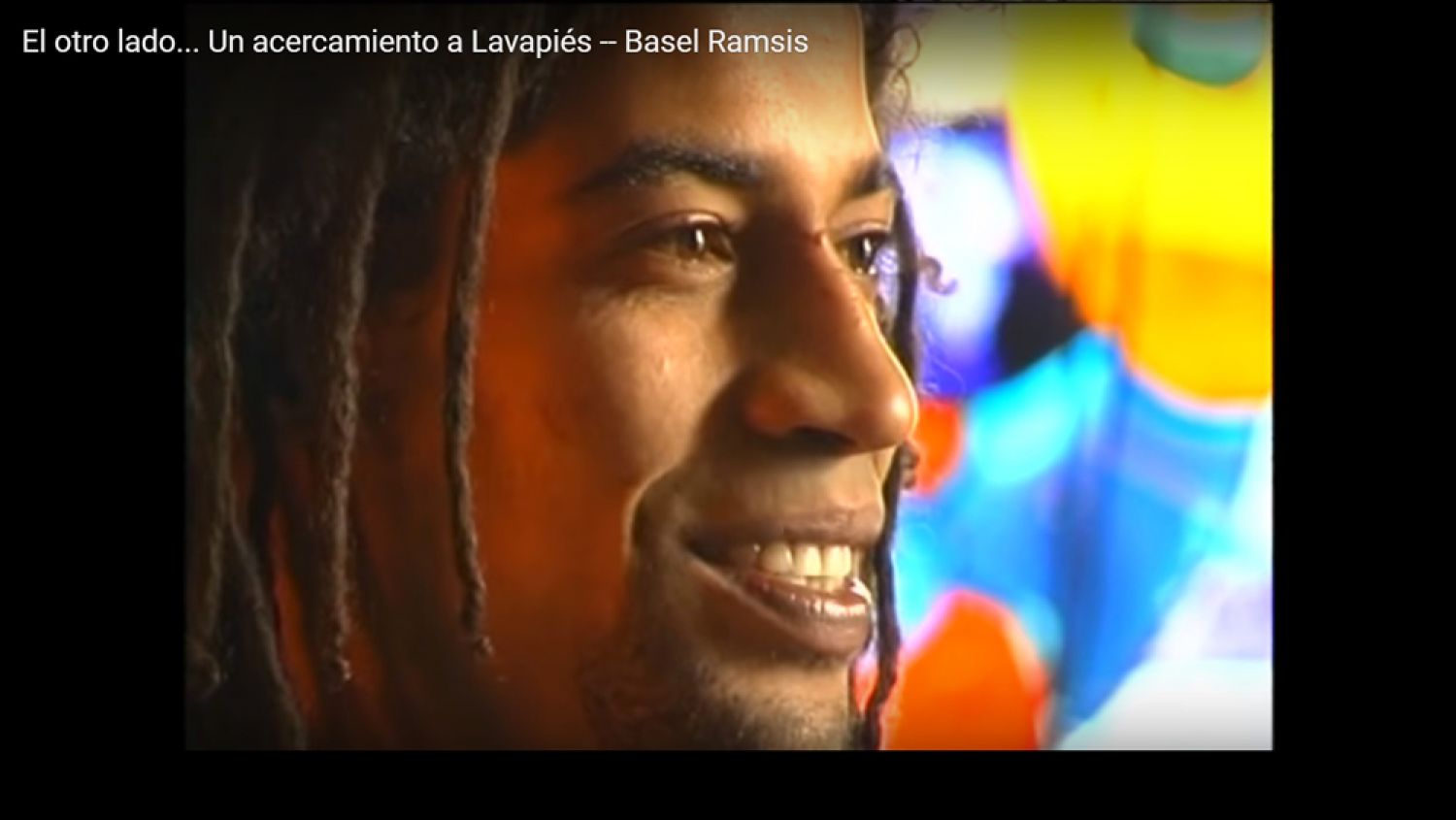
These narrative and formal choices can be further analysed as a strategic response to essentialist positioning and 'othering' of immigrant subjects and as a cinematic form of resistance against stigmatising which allows the further communication of counter-stigmatising narratives. The resistance is performed through formal (the subjects' positioning in front of the camera) and relational (director's egalitarian attitude) strategies that advise the way the protagonists and their testimonies are framed and approached. As if going against the hegemonic «Western mode of literally 'shooting' the other» (Ponzanesi, 2015, p. 213) through the lens of defining and knowing «what the Other needs» (Bauman, 1995), or what behaviour patterns we should expect from 'the other', Ramsis offers with his documentary an alternative deconstructive and de-essentialising way of narrating. As Lavapies' immigrant subjects are approached through an unbiased, transcultural perspective, they are treated as «unprogrammed actors», to use Robins' term (2014), who, and whose transcultural interactions, are to be addressed without pre-set beliefs and «a supposed knowledge of an always abstract other» (2014, pp. 27-35). This means that the examination of the immigrants' cultural identities is conducted within non-essentialist frameworks of inquiry, without imagined pre-constructed cultural positions, prejudices or expected actions or behaviours, but rather through exposing interest in the implications of a transcultural encounter and in its specificities in the postcolonial contemporary European spaces. The director invites a (Spanish/'native') spectator to get to know the immigrant subjects beyond the binary differentiation between 'the self' and 'the other' and through distancing from a pre-supposed general awareness of the latter.
Owing significantly to such formal approach, the discursive output of the film, that is the produced cultural meanings (that derive from the testimonies/dialogues, filming group gatherings, and observation scenes) provide important insights about transcultural dynamics and possibilities in the framing spaces of Lavapiés, as well as about the dialogue of these transcultural negotiations with the stigmatisation and 'othering'.
On the one hand, the film communicates the presence and power of discursive stigmatisation and stereotyping, and as it impacts how immigrant (descent) subjects are perceived and how they perceive themselves. While the immigrant protagonists feel ‘othered’ and not accepted, this interferes in the negotiation of their identities and the expression of their transcultural selves. At the same time, 'othering' impedes intercultural interaction and exchange, and the further building of intercultural relationships, which could serve as a tool for and a way to acceptance. El otro lado... also illustrates that discursive labelling is so entrenched and powerful that it makes immigrant subjects believe in these constructs themselves. On the other hand, Lavapiés immigrant residents respond to the dominance and persistence of essentialist perspectives and marginalisation by their actions of discursive resistance on an individual and collective levels and by reconfiguring themselves through their self-reflections, as facilitated by the dialogues, in which they negotiate their identities, their cultural positions and belonging as transcultural subjects.
In this differing dynamics, the re-construction of Lavapiés as a ‘Third Space’, where immigrant subjects negotiate their multiple cultural positions and reinvent their cultural identities, becomes possible fragmentarily, as it is under constant interference of essentialist perspectives and continuous reinforcement of 'othering'.
The film's critical engagement with the issue of 'othering' can be further positioned as part of the discourses which challenge and question the nation-centric conception of integration. The construction of immigrant identities in their European societies is tightly interrelated with the (re)-construction of national identities of these societies. This interrelation can be approached from two perspectives. On the one hand, as a response to increasing immigration flows and the rise of nationalistic and right-wing political and dominant media discourses, the essentialist narratives of the national culture are being reinforced, in which a quest is undertaken for 'freezing' a defined set of national traits that are common for the national majority and that distinguish this majority from the immigrant minority. On the other hand, the complex transcultural negotiations of immigrant (descent) subjects' identities and manifestations of hybrid lifestyles await recognition, and a closer analysis. By exposing interest in the implications of transcultural encounters, El otro lado... stands out as a film which engages in the analysis of increasing cultural diversity in Europe, and into the explorations of the socio-political contextual factors that interfere into the negotiation of immigrants' transcultural selves. As transcultural negotiation, and the fight for recognition is present in response to essentialist perspectives, and the changing socio-cultural imagery of Madrid is part of this negotiation, the film forges a suggestion to reconsider the integration processes beyond the assimilationist frameworks.
Bibliography
AZAHARA PARAINMIGRANTES. (2011, April 17). El otro lado… Un acercamiento a Lavapiés. [Online]. Available from http://www.parainmigrantes.info/el-otro-lado-un-acercamiento-a-lavapies/. (In Spanish). Accessed: October 15, 2017.
BAUMAN, Zygmunt. (1990). «Modernity and ambivalence». Theory, Culture & Society, 7(2), pp. 143-169.
BAUMAN, Zygmunt. (1995). «Forms of Togetherness». In Life in Fragments: Essays in Postmodern Morality (pp. 44-71). Blackwell: Cambridge.
BHABHA, Homi. K. (1994). The Location of Culture. London: Routledge.
BHAMBRA, Gurminder K. (2014). «Postcolonial and decolonial dialogues». Postcolonial Studies, 17(2), pp. 115-121.
CASTILLO-VILLANUEVA, Alicia. (2014). «Madrid as a Glocal Enclave in El otro lado: un acercamiento a Lavapiés by Basel Ramsis». In CORBALÁN, Ana; MAYOCK, Ellen (eds.), Toward a Multicultural Configuration of Spain: Local Cities, Global Spaces. Madison/Teaneck: Fairleigh Dickinson University Press, pp. 85-95.
EICTV. (n.d.) Básel Ramsis. EICTV escuela de formación audiovisual. [Online]. Available at http://www.eictv.org/profesores/basel-ramsis/. Accessed: October 12, 2017.
FLÜCHTER, Antje; SCHÖTTLI, Jivanta (eds.). (2014). The Dynamics of Transculturality: Concepts and Institutions in Motion. Springer, pp. 1-23.
FOUCAULT, Michel. (1980). Power/knowledge: Selected interviews and other writings, 1972-1977. Pantheon.
FRASER, Nancy. (1997). Justice Interruptus. New York: Routledge.
GRILLO, Ralph D. (2003). «Cultural essentialism and cultural anxiety». Anthropological Theory 3(2), pp. 157–173.
HUNTINGTON, Samuel P. (1997). The Clash of the Civilizations and Remaking of the World Order. London: Penguin.
PONZANESI, Sandra (2016). «On the Waterfront: Truth and Fiction in Postcolonial Cinema from the South of Europe». Interventions, vol. 18, no 2, pp. 217-233.
PRATT, Mary Louise. (1991). «Arts of the contact zone». Profession, 33-40.
RATTANSI, Ali. (2011). Multiculturalism: A very short introduction (vol. 283). Oxford: Oxford University Press.
ROBINS, Kevin. (2014). «Transcultural research as encounter, and a possible creative modality of its dialogue». VV. AA. Transculturality and interdisciplinarity. Challenges for research on media, migration and intercultural dialogue. Barcelona: CIDOB, pp. 23-43.
RUTHERFORD, Jonathan. (1990). The Third Space. Interview with Homi Bhabha. In RUTHERFORD, Jonathan (ed.), Identity: Community, Culture, Difference. London: Lawrence and Wishart, pp. 207-221.
SAID, Edward W. (1978/1995). Orientalism: Western Conceptions of the Orient. London: Penguin.
SCHRIEWER, Klaus; CAYUELA SÁNCHEZ, Salvador. (eds.) (2016). Introducción. Cruzando Fronteras: Nuevas perspectivas sobre migración, trabajo y bienestar. Barcelona: Romanyá Valls. Capellades, pp. 9-14.
SHIEL, Mark. (2001). Cinema and the City in History and Theory. In SHIEL, Mark; FITZMAURICE, Tony (eds.), Cinema and the city: Film and urban societies in a global context (pp. 1-18). Oxford: Wiley-Blackwell.
VAN ES, Margaretha A. (2017). «Muslim women as ‘ambassadors’ of Islam: breaking stereotypes in everyday life». Identities, pp. 1-18. Available at http://www.tandfonline.com/doi/full/10.1080/1070289X.2017.1346985. Accessed: October 30, 2017.
WELSCH, Wolfgang. (1999). «Transculturality–The Puzzling Form of Cultures Today». In FEATHERSTONE, Mike; LASH, Scott (eds.), Spaces of Culture: City, Nation, World. London: Sage. pp. 194-213.
Filmography
ARMENDÁRIZ, Montxo. (1990). Las Cartas de Alou. Spain: Elías Querejeta, TVE.
RAMSIS, Básel. (2002). El otro lado... Un acercamiento a Lavapiés. Dayra Arts, Basel Ramsis.
Footnotes
